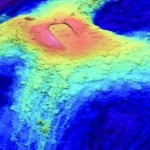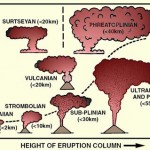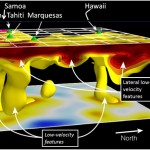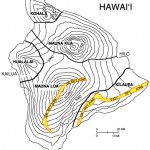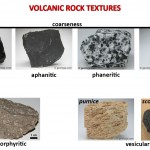Within the ash plumes of explosive volcanic eruptions, collisions among countless pyroclastic particles sometimes lead to the buildup of static charges that discharge dramatically as volcanic lightning. In a new study, researchers have found that this lightning can, in turn, melt and fuse ash particles into distinctive glassy grains called spherules. Identifying and studying these spherules could help scientists better understand past and future eruptions, the study’s authors suggest.
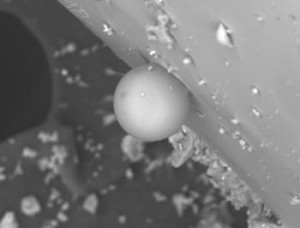
A glass spherule formed during experiments using basalt "pseudo-ash" to induce electrical arcing in high-voltage electrical insulators. Credit: Kimberly Genareau
In volcanic plumes, regions or layers of oppositely charged particles develop naturally; typically “the higher region of a plume is positively charged, while the ground and the plume’s lower region are negatively charged,” says John Wardman, a geologist at the University of Canterbury in New Zealand and co-author of the new study published in Geology. “When the net difference of charge between two regions is sufficiently high, a discharge [lightning bolt] occurs between the two regions.” This lightning can reach 30,000 degrees Celsius for several milliseconds — more than enough to melt fine ash particles, which then shape into spherules as they fall through the air and cool rapidly.
Read the rest of my article at EARTH magazine →

